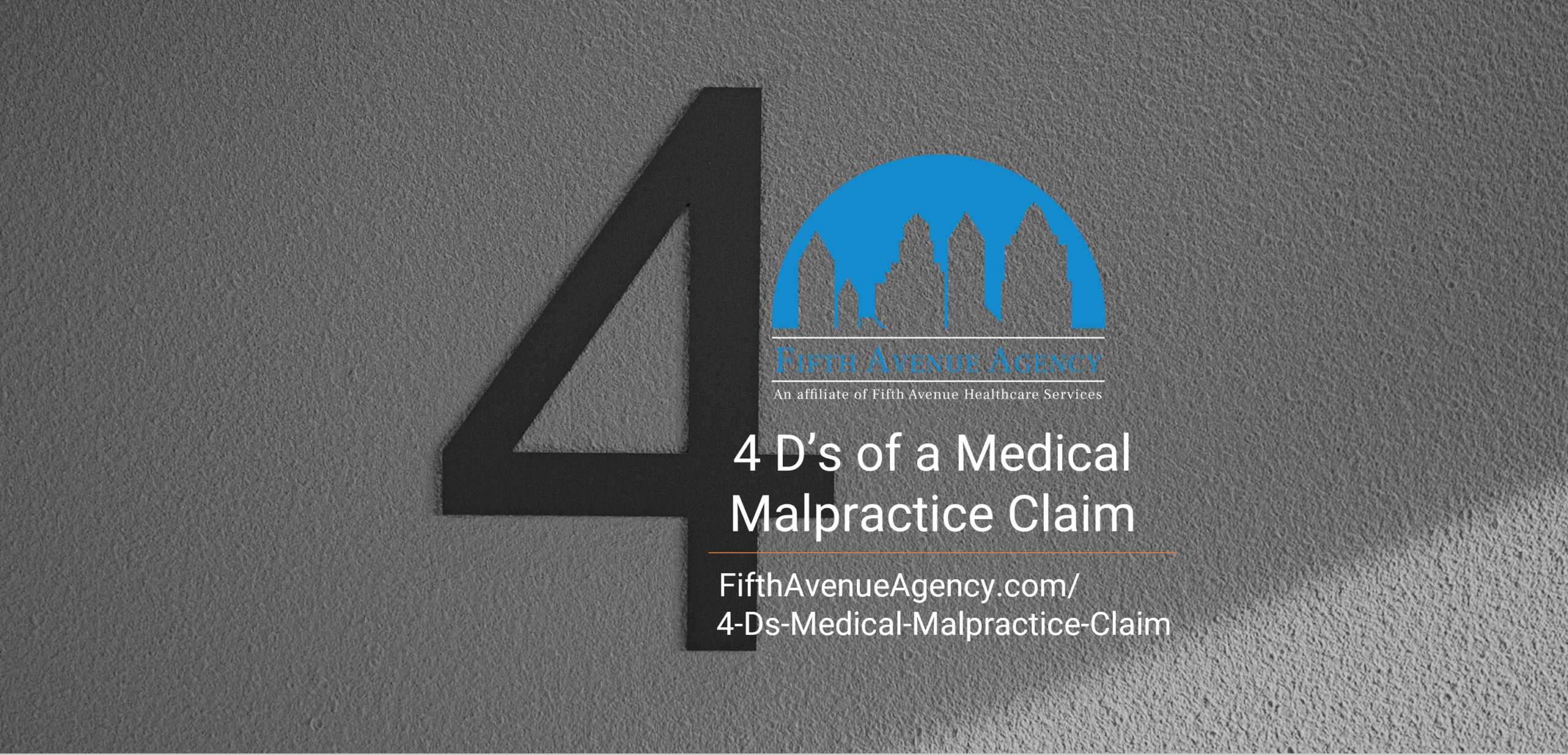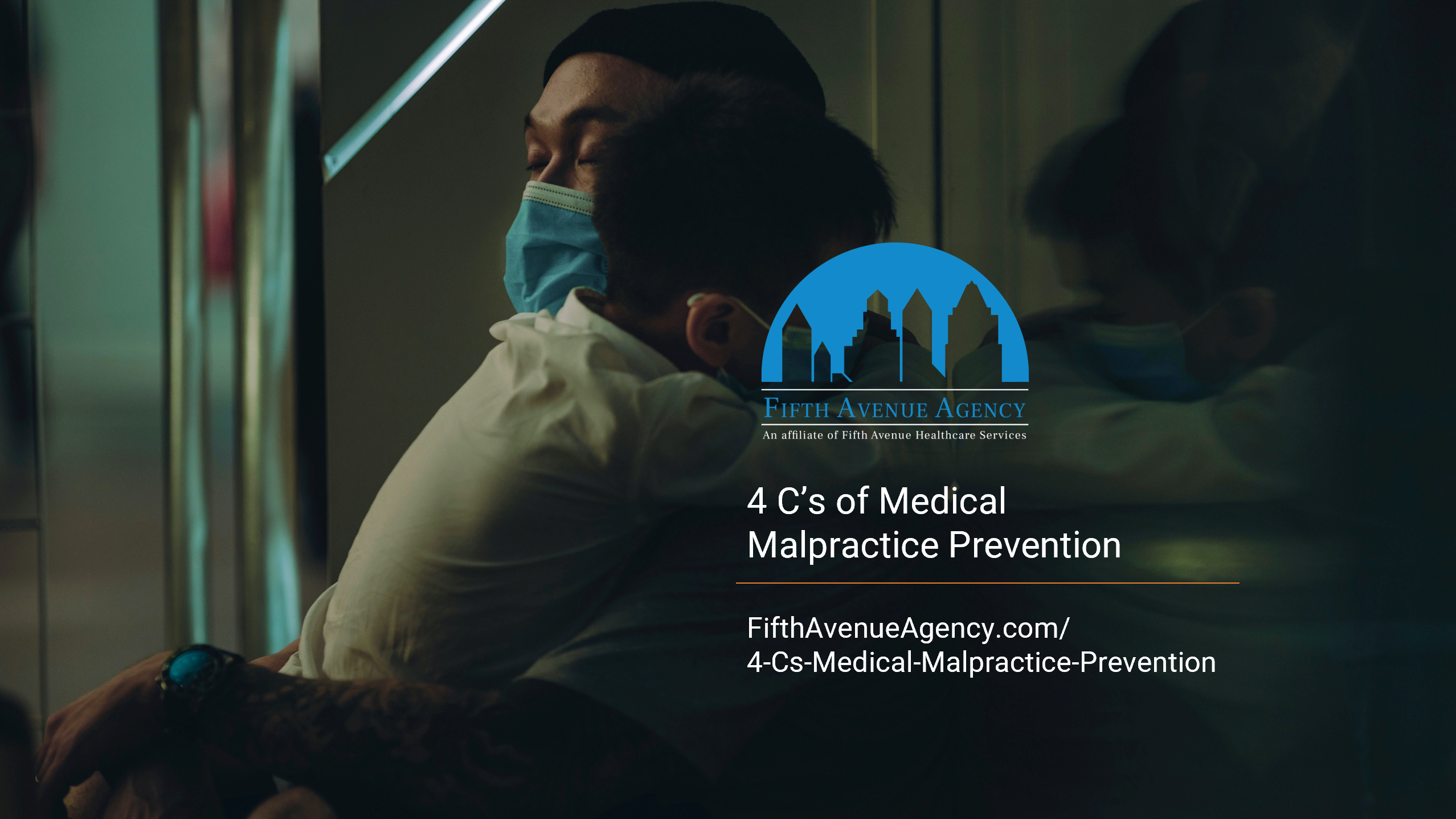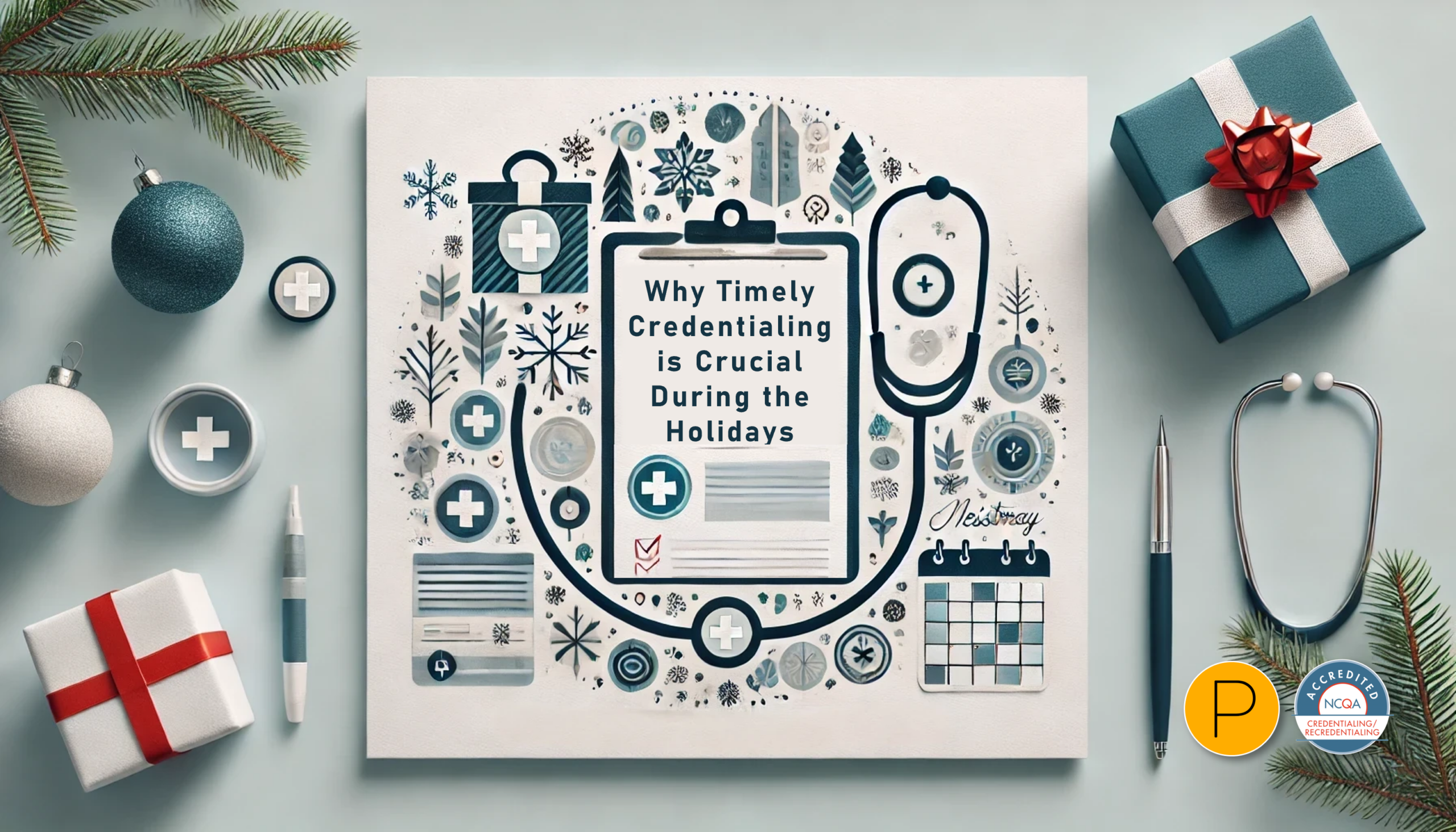A medical malpractice claim must pass the standard 4 D’s of medical malpractice to be considered valid, and the location of the malpractice plays a role in setting a legal deadline or determining if there is a statute of repose as part of the statute of limitations for medical malpractice.
Let us examine these two variables in more detail and provide an answer on what the statute of limitations is for medical malpractice.
The Foundation of a Medical Malpractice Claim
According to The National Library of Medicine, medical malpractice is “any act or omission by a physician during treatment of a patient that deviates from accepted norms of practice in the medical community and causes an injury to the patient.”
For a medical malpractice claim to be considered valid, the 4 Ds of medical malpractice must be established.
- Duty: A proper doctor/patient relationship must be proven. It must be understood that within this relationship, the doctor will provide professional care to a patient to the best of their abilities.
- Direct Cause: The injured party must show that their healthcare provider’s negligence directly caused their injury. The provider’s deviation from accepted practice norms caused the injury, not an intervening event. Common examples of deviations include misdiagnosing a patient, recommending unnecessary surgery, and prescribing incorrect medications.
- Dereliction: It must be proven that the provider caused harm in a way that a more competent physician would not have. For instance, an adept surgeon would not leave a sponge inside a body after surgery.
- Damages: A patient can only sue if they experienced harm due to a doctor’s negligence that caused damages, and the court can assign compensation.
An injured party who wants to bring forth medical malpractice claims must prove their case via medical records and testimonies. They must file their claim before their State’s medical malpractice statute of limitations deadline.
What is a Statute of Limitations for Medical Malpractice?
A statute of limitations for medical malpractice sets the maximum time for parties to launch litigation from the date of an alleged offense. This law is essential because the more time passes after an incident, the more likely evidence will become lost, and witnesses’ memories weaken.
There is a statute of limitations for medical malpractice claims in every State. The period does not usually begin until a patient discovers they have been injured. Each State has exceptions that could affect the deadline. Complicating the matter further is that each statute of limitations might have several deadlines.
Statute of Limitations for Medical Malpractice Deadlines
All statutes of limitations for medical malpractice claims have standard deadlines specific to their State. Claims must be filed by these dates. Injured parties who attempt to file after any deadlines will probably have their cases denied by the court. Thirty-two states have statutes of repose. These require that a claim be filed at a set time after the date the injury was sustained, regardless of when it was discovered. Statutes of repose deadlines are usually set far later than standard deadlines.
Statute of Limitations for Medical Malpractice by State
The following are each State’s statute of limitations for medical malpractice. There are exceptions and nuances to each one.

Listed below is general information on the statute of limitations for a medical malpractice claim, by the State, as of the time of this writing.
Alabama
- Standard deadline: 2 years
- Statute of repose: 4 years
Alaska
- Standard deadline: 2 years
- Statute of repose: 10 years
Arizona
- Standard deadline: 2 years
- Statute of repose: none
Arkansas
- Standard deadline: 2 years
- Statute of repose: none
California
(the State with the most medical malpractice lawsuits over the past 30 years)
- Standard deadline: 3 years after the date of injury or 1 year after the date of discovery, whichever is earlier
- Statute of repose: none
Colorado
- Standard deadline: 2 years
- Statute of repose: 3 years
Connecticut
- Standard deadline: 2 years
- Statute of repose: 3 years
Delaware
- Standard deadline: 2 years
- Statute of repose: 3 years
Florida
- Standard deadline: 2 years
- Statute of repose: 4 years
Georgia
- Standard deadline: 2 years
- Statute of repose: 5 years
Hawaii
(the State with the fewest medical malpractice lawsuits over the past 30 years)
- Standard deadline: 2 years
- Statute of repose: 6 years
Idaho
- Standard deadline: 2 years
- Statute of repose: none
Illinois
- Standard deadline: 2 years
- Statute of repose: 4 years
Indiana
- Standard deadline: 2 years after the alleged malpractice happened
- Statute of repose: none
Iowa
- Standard deadline: 2 years
- Statute of repose: 6 years
Kansas
- Standard deadline: 2 years
- Statute of repose: 4 years
Kentucky
- Standard deadline: 1 year
- Statute of repose: 5 years (maybe) – the Kentucky Supreme Court declared that the statute of repose violates the state constitution
Louisiana
- Standard deadline: 1 year
- Statute of repose: 3 years
Maine
- Standard deadline: 3 years
- Statute of repose: none
Maryland
- Standard deadline: 5 years after the date of injury or 3 years after the date of discovery, whichever is earlier
- Statute of repose: none
Massachusetts
- Standard deadline: 3 years
- Statute of repose: 7 years
Michigan
- Standard deadline: 2 years
- Statute of repose: 6 years
Minnesota
- Standard deadline: 4 years
- Statute of repose: none
Mississippi
- Standard deadline: 2 years
- Statute of repose: 7 years
Missouri
- Standard deadline: 2 years
- Statute of repose: 10 years
Montana
- Standard deadline: 2 years
- Statute of repose: 5 years
Nebraska
- Standard deadline: 2 years
- Statute of repose: 10 years
Nevada
- Standard deadline: 3 years after the date of injury or 1 year after the date of discovery, whichever is earlier
- Statute of repose: none
New Hampshire
- Standard deadline: 3 years
- Statute of repose: none
New Jersey
- Standard deadline: 2 years
- Statute of repose: none
New Mexico
- Standard deadline: 3 years from the date of injury
- Statute of repose: none
New York
(the State with the largest medical malpractice compensation awards over the past 30 years)
- Standard deadline: 2 years and 6 months
- Statute of repose: none
North Carolina
- Standard deadline: 3 years
- Statute of repose: 4 years
North Dakota
(the State with the lowest medical malpractice compensation awards over the past 30 years)
- Standard deadline: 2 years
- Statute of repose: 6 years
Ohio
- Standard deadline: 1 year
- Statute of repose: 4 years
Oklahoma
(the State with the most medical malpractice lawsuits per capita over the past 30 years)
- Standard deadline: 2 years
- Statute of repose: none
Oregon
- Standard deadline: 2 years
- Statute of repose: 5 years
Pennsylvania
- Standard deadline: 2 years
- Statute of repose: 7 years
Rhode Island
- Standard deadline: 3 years
- Statute of repose: none
South Carolina
- Standard deadline: 2 years
- Statute of repose: 5 years
South Dakota
- Standard deadline: 2 years
- Statute of repose: none
Tennessee
- Standard deadline: 1 year
- Statute of repose: 3 years
Texas
- Standard deadline: 2 years
- Statute of repose: 10 years
Utah
- Standard deadline: 2 years
- Statute of repose: 4 years
Vermont
- Standard deadline: 3 years
- Statute of repose: 7 years
Virginia
- Standard deadline: 2 years
- Statute of repose: none
Washington
- Standard deadline: 3 years after the date of injury or 1 year after the date of discovery, whichever is later
- Statute of repose: 8 years
West Virginia
- Standard deadline: 2 years
- Statute of repose: 10 years
Wisconsin
- Standard deadline: 3 years after the date of injury or 1 year after the date of discovery, whichever is later
- Statute of repose: 5 years
Wyoming
- Standard deadline: 2 years
- Statute of repose: none
Limit Your Exposure to Medical Malpractice Claims
Making sense of the complexities of a state’s statute of limitations for medical malpractice can cause headaches. Include filing procedures unique to each State, and medical malpractice claims become massive undertakings. Additionally, the State’s statute of limitations for medical malpractice can always change. Keeping up to date with them is another crucial aspect that takes time and energy.
Other than giving the best care possible, healthcare providers and practices can limit their exposure to medical malpractice claims through proper credentialing and medical malpractice insurance.
The 4 Cs of Medical Malpractice Prevention
Physicians can follow the 4 Cs of medical malpractice prevention to protect themselves from malpractice claims when they treat patients:
- Care: Sympathizing with patients creates a bond of trust. Patients who feel their physician cares about them might be less likely to sue for malpractice.
- Communicate: Open and clear communication can allow patients to understand better what is happening to them. Incorrect information is the primary culprit of negligence.
- Display Competence: Following appropriate standards of care can go a long way in preventing malpractice.
- Chart: Documenting a patient’s health history, including any treatment plans, can improve care and be robust evidence should a medical malpractice case go to court.
Complete Accurate Credentialing
Medical credentialing can prevent unqualified healthcare providers with histories of negligence from gaining employment and placing patients at risk of harm. Credentialing can help medical practices and organizations lower their chances of facing medical malpractice lawsuits.
Credentialing involves verifying a provider’s education, experience and claims history. Primary source verification is the core component of the process. The highly detailed task includes collecting licenses, registrations, certifications, training and work histories, insurance information, and more.
Some medical practices perform credentialing in-office, creating a risk of error and miscommunication. One overlooked item can result in a poor provider being successfully credentialed. Credentialing also requires office staff to take time from their hectic schedules to do the job. They might miss a particular point or step if they rush through the process. Many healthcare providers rely on a credentials verification organization (CVO) like 5ACVO to help them through the detailed procedure.
CVOs work with practices to certify that providers are competent to care for patients. CVOs complete the majority of actions, significantly reducing the administrative requirements of healthcare organizations. They are responsible for searching for and obtaining relevant information on providers. CVOs perform thorough background checks using databases like abuse and sex offender registries. If needed, CVOs also conduct credentialing on current providers to verify the qualifications of an entire staff.
Obtain Proper Medical Malpractice Insurance
Being insured will not stop patients from filing malpractice claims, but it can mitigate lengthy and costly litigation. Medical malpractice liability insurance can cover settlement costs, attorney fees, and medical damages. Although the reputations of a provider and their practice might be tarnished, their assets would probably be untouched by a lawsuit.
Malpractice insurance can be as intricate and confusing as the statute of limitations for medical malpractice. Owning insurance is not enough. Providers must understand the terms of their policies and comprehend their implications. Solutions to help them navigate the complex world of insurance can help make sure they get the most effective coverage for their situation.
In 2021, 51% of doctors were named in a medical malpractice lawsuit. 75% of physicians in low-risk and 99% in high-risk specialties will deal with a medical malpractice claim by age 65. It is nearly certain that a healthcare provider will be sued for alleged negligence despite any statute of limitations. Taking all possible precautions can alleviate the burden on providers and patients alike.
More information about Fifth Avenue Agency
Fifth Avenue Agency specializes in MPLI and medical malpractice insurance, serving 1000s of providers nationwide. Fifth Avenue Agency is part of the Fifth Avenue Healthcare Services family. Sister companies include 5ACVO (credentialing and primary source verification specialists) and Primoris Credentialing Network (credentialing and provider enrollment specialists with 54+ health plan and network provider enrollment options).
Fifth Avenue Agency initially published this article here. For information on Fifth Avenue Agency, please visit FifthAvenueAgency.com or Contact Us.

















